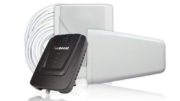It won’t be long now before you get tired of getting “merely” HD quality on your phone. Data rates have risen astronomically in the last decade; while it was rarely possible to get .011 megabits per second in 2006, it’s quite easy to get 30 megabits per second plucked right from the air on your pocket sized device. Wouldn’t you like to get 300 or 3,000 megabits per second from a cellular device? You could ditch your home-based internet and still stream 4K, and I’m sure there will be some mobile app that makes use of all those bits, although I am not sure what it would be.
FCC Chair Tom Wheeler wants to find out, too. He’s ready to “circulate a proposal to begin 5G proceedings.” At least that’s what our friends at The Verge say and they’re usually right. The FCC is ready to start being ready to talk and folks, for a government agency, that’s a big step. It means that 5-7 years from now there could actually be a real 5G phone.
The FCC has been repeatedly accused of letting other countries take the lead in cellular phone technology. The cell phone was invented in the US, but for the last decade, it’s been Southeast Asia that’s led the way. Even some countries in central Africa beat the US in cellular implementation because they have been so focused on putting in new towers. Perhaps Mr. Wheeler sees 5G as a way to gain back some of that technological leadership.
Personally, I hope that when they do 5G, that they’ll do it right. I’m talking about a unified set of standards that makes it much more likely that any given phone will work with any given carrier. Right now there are a maze of technologies and frequencies that makes it very hard to move your phone from one carrier to another. Perhaps the FCC will see the wisdom in creating standards that hold up for all carriers and yet still encourage innovation. It can be done, although it isn’t easy.
We won’t see a 5G device for a least a few years. The FCC needs to decide how it’s going to work, and a big part of that is the “reverse auction” that should open up more frequencies for cellular as it takes those frequencies from TV broadcasters. Then all the backend stuff needs to be built, and phone makers need to figure out how it’s all going to fit in such a tiny package and still have good battery life. If you think back to the very first 4G devices, they were clunky, messy battery hogs. Sure they had fast downloads… for about 15 minutes. No one is anxious to go back to those days.
Hopefully, prudent planning by the FCC and the new technology we have today will make the next transition a little easier, but the “good” news is that at the rate the government works, it’s going to be a little while before we have to worry about it.





